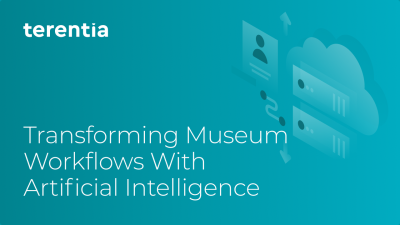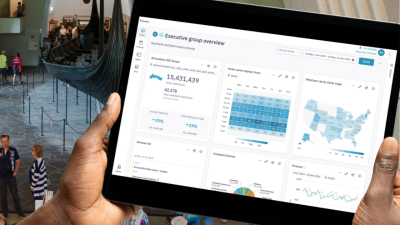
Today’s guest post is by Richard V. Piacentini, executive director of Phipps Conservatory and Botanical Gardens. Richard previews one of the themes we will explore next month at Feeding the Spirit: Museums, Food & Community—how museums can bring the operation of their food services into alignment with their mission-related values while still attending to the financial bottom line.
Soda: It’s about as unhealthy as you can get but, boy can you make money on it. Twelve cents’ worth of syrup mixed with inexpensive carbonated tap water and sold at $1.75 a cup turns a good profit.
And yet, in less than a month soda will be gone from Phipps. By then our new “Splash” Bar will be open and we will be serving filtered and sparkling water with a splash of fresh fruit juice. At less than 40 calories per serving, these new offerings fit nicely with the recommendations of the Harvard School of Public Health.
Like many museums and gardens, Phipps didn’t start out with a health focus when we opened our cafe. Initially, we were only looking to align our food service practices with our green building philosophy by featuring organic and local foods, and eliminating plastic disposables. Ultimately we realized that despite the risks of lost profits, it just wasn’t consistent with our mission to ignore the environmental and health effects of the types of food we offered; we felt we had to change. We wanted our café to reflect the same high standards we hold ourselves to in everything else we do.
After eliminating bottled water several years ago, and shifting our focus to more sustainably-produced fruits and vegetables, and minimally processed foods, Phipps upped the ante by increasing the number of vegetarian and vegan options we offered and, even started to feature vegetarian specials on Meatless Mondays. We also developed a series of programs to engage urban kids in healthy foods and gardening.
Skip over related stories to continue reading articleEven after all those changes, we realized that the types of food we were serving kids were contributing to the obesity epidemic. We decided to eliminate sugary, flavored milks, fried foods and hot dogs. Next, we added fresh, organic fruits and vegetables, and whole grains to our kid’s meals, switching to healthier menu items like whole wheat pasta with turkey meatballs. We even came up with a café mission statement to get all our staff on the same page, bringing us to the present day and the soda machine.
There were skeptics at first, but we persisted. We conceived and tested our “Splash” Bar—and, so far, people like it. While we don’t make as much money on beverages as we used to, the goodwill, press and reputation we are generating as a result is great. It has even led to our role as an initiator and leader in Let’s Move Pittsburgh to help promote healthy lifestyles for children in our region. I also expect that we will soon surpass our old café sales numbers.
When you face choices about configuring your food service, you have to guide decisions with considerations of both mission and money. For us it was easy to connect the dots. Our mission at Phipps is to connect people to the important role that plants play in our lives and to promote environmentally-responsible lifestyles and practices. The most important ways that people and plants interact is through the food we eat and the biggest impact on our health and the environment is made through the way that interaction is currently taking place. Our industrialized, factory farm and highly processed food system is destructive to the environment and our bodies while disconnecting us from nature. In this respect, promoting healthy and responsibly produced foods is right up our alley and ties in seamlessly with all of our other greening efforts up to and including our constructing a Living Building. Not every museum will have as clear a mandate, but certainly any institution with a mission that encompasses concern for the environment and people can make the same case.
Unfortunately, the current economics of most food service contracts cause difficulty in making mission-based decisions. Museums usually find a vendor that will absorb the losses from a food service in exchange for exclusive catering rights and an agreement to pay a guaranteed percentage of catering revenues. This model is a recipe for failure, since the food service vendor has every incentive to serve as inexpensive a product as they can in order to mitigate their losses, making it hard to implement dramatic changes in your café. Usually, you are then limited to little tweaks here and there, stirring the same old pot when what you really need to do is shake things up and start from scratch. The field needs a new economic model for food services that helps us make values-based operational decisions. At Phipps, we pay an outside vendor a management fee, and we make the profits and absorb the losses. It is riskier, but it gives us the control we desire.
Can we change the way we run our cafés? Is the Phipps model relatable to other museums? Are there other ways to accomplish similar goals? I hope these are topics we can explore further at the upcoming Feeding the Spirit conference on Oct. 13 as we examine our future relationship with food.









Comments